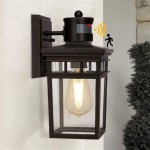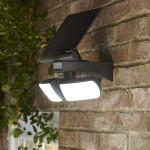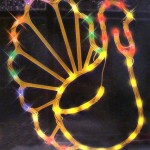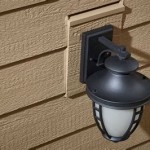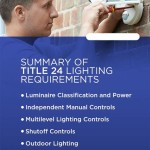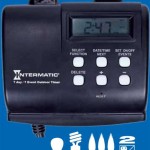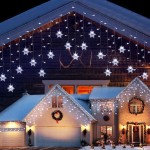Understanding Outdoor Light Wattage: A Comprehensive Guide
Selecting the correct wattage for outdoor lighting is crucial for achieving optimal illumination, enhancing safety, and minimizing energy consumption. Wattage, a measure of electrical power, directly influences the brightness of a light fixture. Choosing the appropriate wattage involves considering various factors, including the intended purpose of the light, the size of the area to be illuminated, and the type of lighting technology employed.
Historically, wattage has been the primary metric for determining light output. However, with the advent of energy-efficient lighting technologies such as LEDs, relying solely on wattage can be misleading. Lumens, which measure the total amount of visible light emitted by a source, provide a more accurate representation of brightness. Despite this shift, understanding wattage remains essential for understanding energy consumption and ensuring compatibility with existing electrical systems.
This article provides a comprehensive overview of outdoor light wattage, exploring its relationship to lumens, the factors influencing wattage selection, and the implications of different lighting technologies. It aims to equip readers with the knowledge necessary to make informed decisions about their outdoor lighting needs.
Key Point 1: Wattage, Lumens, and Brightness Explained
The relationship between wattage, lumens, and brightness is fundamental to understanding outdoor lighting. Wattage, as previously stated, measures the electrical power consumed by a light fixture. Lumens, on the other hand, quantify the total amount of light emitted. Brightness, a subjective perception of light intensity, is directly correlated with lumens.
Incandescent light bulbs, a traditional lighting technology, typically require higher wattage to produce a given number of lumens compared to more efficient technologies. For example, a 60-watt incandescent bulb might produce around 800 lumens. In contrast, an LED bulb could generate the same 800 lumens using only 8-12 watts. This difference highlights the energy-saving potential of modern lighting technologies.
When selecting outdoor lighting, focusing on lumens rather than wattage is generally advisable. Determining the desired level of brightness for a specific area should be the initial step. Then, the appropriate wattage can be chosen based on the lumen output of the selected lighting technology. This approach ensures adequate illumination while minimizing energy consumption. For instance, if bright security lighting is desired for a large driveway, choosing LED fixtures with a high lumen output but relatively low wattage can provide optimal performance and energy savings.
Furthermore, understanding the concept of "lumens per watt" (efficacy) is useful. This metric indicates how efficiently a light source converts electrical power into visible light. Higher efficacy translates to greater energy efficiency, as more light is produced for each watt consumed. LED lights typically have significantly higher efficacy than incandescent or halogen bulbs.
Key Point 2: Factors Influencing Wattage Selection for Outdoor Lighting
Numerous factors influence the appropriate wattage for outdoor lighting. These considerations include the intended purpose of the lighting, the size and layout of the area being illuminated, the presence of ambient light, and the desired aesthetic effect.
Security lighting, for example, typically requires higher wattage and lumen output to provide bright, clear illumination and deter potential intruders. Motion-activated security lights often employ higher wattage to maximize visibility when triggered. Conversely, pathway lighting, intended to guide pedestrians safely along walkways, may require lower wattage to create a softer, more ambient glow.
The size and layout of the area being illuminated play a critical role in determining the number of light fixtures and their respective wattages. Larger areas naturally require more light to achieve adequate illumination. Spacing and placement of light fixtures should be carefully considered to avoid dark spots or areas of excessive brightness. For example, a large backyard might benefit from multiple strategically placed floodlights with moderate wattage, rather than a single high-wattage light source.
Ambient light, such as light from streetlights or neighboring properties, can also influence wattage selection. In areas with significant ambient light, lower wattage fixtures may suffice. Conversely, in areas with minimal ambient light, higher wattage fixtures may be necessary to achieve the desired level of illumination. This assessment requires careful observation of the area during nighttime hours to determine the existing light levels.
The desired aesthetic effect should also be considered. Warm white light (around 2700K-3000K) is often preferred for creating a welcoming and comfortable atmosphere, while cool white light (around 4000K-5000K) is often used for task lighting or security lighting. The color temperature of the light source can indirectly influence the perceived brightness and, therefore, the required wattage.
Key Point 3: Outdoor Lighting Technologies and Wattage Equivalencies
Different lighting technologies offer varying levels of energy efficiency and lumen output for a given wattage. Understanding these differences is crucial for making informed decisions about outdoor lighting upgrades or new installations. The primary lighting technologies commonly used for outdoor applications include incandescent, halogen, compact fluorescent (CFL), and light-emitting diode (LED).
Incandescent bulbs, while inexpensive, are the least energy-efficient option. A significant portion of the energy consumed by an incandescent bulb is converted into heat rather than light. Consequently, incandescent bulbs require higher wattage to produce a given number of lumens compared to other technologies. These are progressively being phased out due to their inefficiency.
Halogen bulbs offer slightly improved energy efficiency compared to incandescent bulbs. They produce a brighter, whiter light and have a longer lifespan. However, they still consume significantly more energy than CFLs or LEDs. Halogen bulbs are often used for spotlights and floodlights due to their high lumen output.
CFLs are significantly more energy-efficient than incandescent and halogen bulbs. They consume less wattage to produce the same amount of light and have a longer lifespan. However, CFLs contain mercury and require special disposal procedures. Their light quality is often perceived as less desirable than incandescent or halogen bulbs, and they can take longer to reach full brightness.
LEDs are the most energy-efficient outdoor lighting option currently available. They consume significantly less wattage to produce the same amount of light as traditional bulbs and have a much longer lifespan. LEDs are also available in a wide range of color temperatures and styles, offering greater flexibility in design and application. While LEDs typically have a higher initial cost, their long lifespan and energy savings often result in lower overall costs in the long run. Furthermore, LED technology is constantly evolving, leading to even greater improvements in energy efficiency and light quality.
To illustrate wattage equivalencies, consider the following examples: A 60-watt incandescent bulb producing approximately 800 lumens could be replaced by a 12-watt LED bulb producing the same number of lumens. A 100-watt halogen bulb could be replaced by a 20-watt LED bulb. These examples demonstrate the significant energy savings achievable by switching to LED technology. When upgrading to LED lighting, focusing on the lumen output rather than simply matching the wattage of the existing bulbs is the recommended approach. A table comparing typical wattage and lumen output for different lighting technologies can provide a useful reference during the selection process.
In summary, choosing the right wattage for outdoor lighting involves considering multiple factors, including the desired brightness, the size and layout of the area, and the chosen lighting technology. Understanding the relationship between wattage and lumens, as well as the energy efficiency of different lighting options, is crucial for making informed decisions that optimize illumination, enhance safety, and minimize energy consumption. By carefully evaluating these factors, it is possible to create effective and energy-efficient outdoor lighting systems that enhance both the aesthetics and functionality of a property.

Led Flood Lights What You Need To Know

How Many Lumens Outdoor Landscape Lights Need To Work Well

Everything To Know About Bulbs For Landscape Lighting

How Many Lumens Do You Need For Outdoor Lighting

Choose The Best Color Temperature For Your Outdoor Lighting Knowledge Base Super Bright Leds

Led Flood Lights What You Need To Know

This Is The Best Wattage For Outdoor Lights Around Homes

This Is The Best Wattage For Outdoor Lights Around Homes

What Wattage Is Best For Outdoor Flood Lights Ledmyplace

Comparing High Wattage And Low Led Flood Lights Agc Lighting
Related Posts
